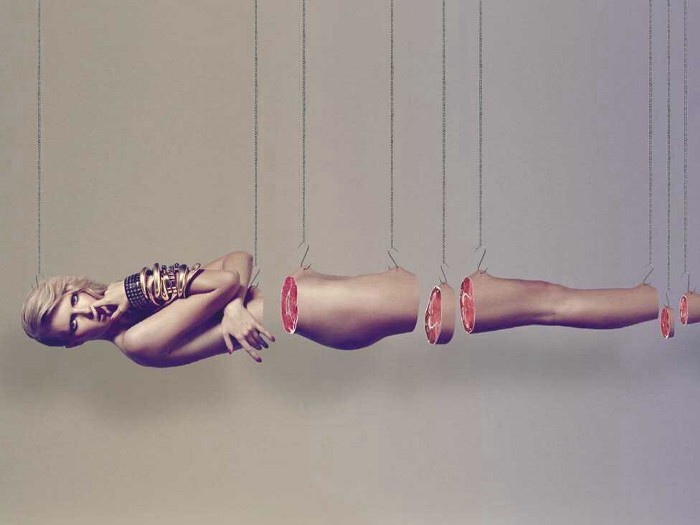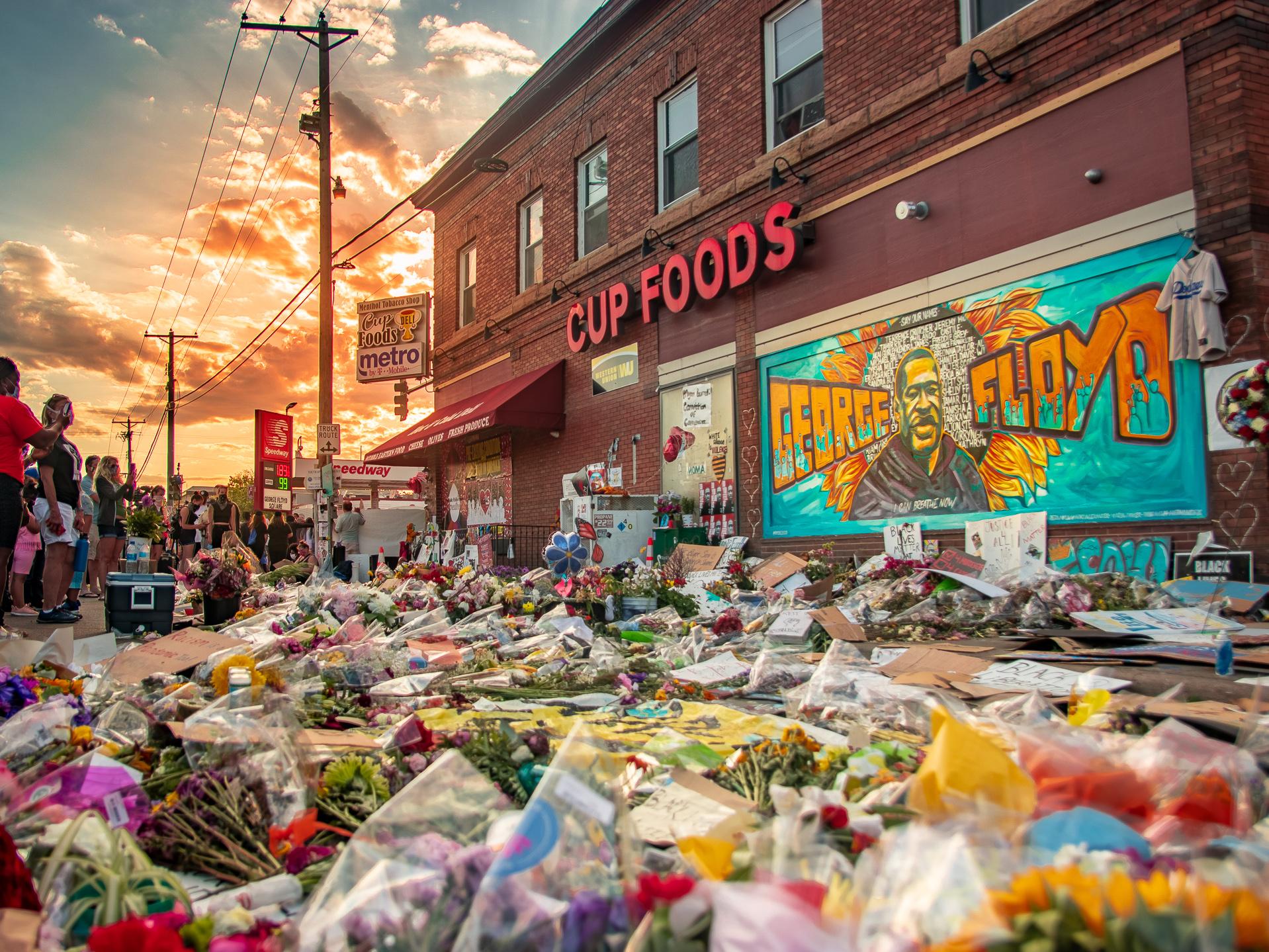In honor of International Women’s Day, Dr. Corey Wrenn presents this 35 minute lecture on the history and contemporary politics of the vegan feminist faction of the animal rights movement. Gender is, and always has been, central to the claimsmaking, mobilizing, and efficacy of animal rights activism.
COVID Masculinities and the Meat of the Matter
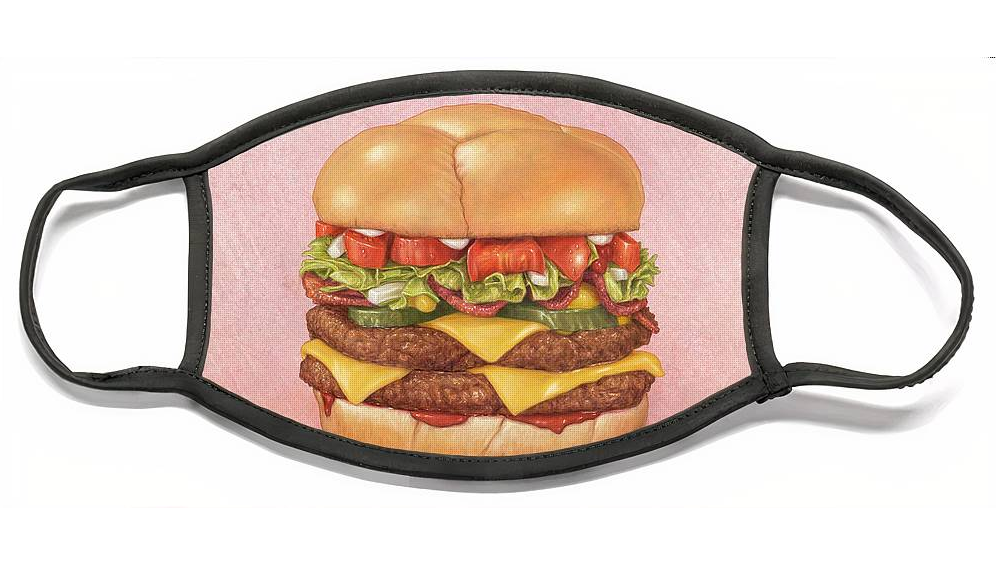
On Super Bowl Sunday, households across the nation ignored Dr. Anthony Fauci’s advice to only enjoy the iconic game with their immediate household. Instead, Super Bowl parties are expected to be ‘mini super spreader’ events with COVID-19 infections projected to grow exponentially because of these gatherings. Like cockfights in Bali (a case study often used by anthropologists to understand gendered politics in the region), Dr. Jan Huebenthal has argued that the Super Bowl similarly says something about masculinity in America. The potential for Super Bowl parties, often facilitated by men, to increase COVID-19 infections is not the first time toxic masculinity has been criticized for exacerbating the harm caused by COVID-19. Salon has written that “toxic masculinity has become a threat to public health,” the New York Times has argued that men’s “aversion to common sense protections” is inherently intertwined with men’s fear of seeming weak, and Wyoming News has simply stated that “toxic masculinity [is] a big reason for spread of COVID-19.” However, the implications of toxic masculinities and pandemics does not stop at COVID-19; toxic masculinity also increases the risks for future infectious disease outbreaks caused by animal agriculture.
Though the origin of COIVD-19 remains unknown, it has been argued that there are “many unshakeable links between modern animal agriculture and COVID-19.” COVID-19 is a zoonotic disease, which means that it originates in animals and can jump to other species, such as human beings. The root cause of zoonotic diseases is often animal exploitation; modern agricultural practices, such as factory farms, are involved in high-risk interaction between humans and animals and pose a serious risk for future outbreaks, such as avian flu. This is why organizations, like the Animal Legal Defense Fund, have published white papers on the relationship between COVID-19 and animal agriculture in the hopes of reducing the likelihood of a future global pandemics.
In addition to necessary policy changes that the white papers discuss, we must also interrogate the relationship between toxic masculinity and meat consumption, specifically in the context of COVID-19. Toxic masculinity has been a hot-button term for the past few years and is used to describe how what society deems ‘being manly’ is can be harmful to women, as well as the men themselves. Similarly, hegemonic masculinity is the practice of structures and institutions that legitimize men’s dominant position in society and encourage toxic masculinities. In the autumn of 2020, NORMA: International Journal for Masculinity Studies posted a call for papers concerning the masculinities of COVID-19 in which the journal contended that “political and social appeals to act responsibly seem to be intertwined with different assumptions of what a good man should and should not do, not only among politicians but also in everyday encounters between obliging and obstructing citizens.” It asked scholars to research why men are dying at higher rates than women from the COVID-19 pandemic, how toxic masculinities played out on the federal level through policy creation, and in which ways fear of seeming weak and vulnerable have affected some men’s usage of commonsense COVID-19 protections, such as wearing masks.
These traits of what being a strong man means, which Salon described as “individualistic, pick-yourself-up-by-your-bootstraps rhetoric,” has been reified by Trump’s re-election campaign. As the Washington Post reported, Trump’s response to the COVID-19 pandemic seems to be “This potentially deadly illness is something to dominate or be dominated by.” These anxieties about seeming ‘weak’ are an example of toxic masculinities that directly affect public health, especially as men have refused to wear masks in fear of being seen as weak and have “turned mask wearing into a battlefield in the culture war,” as argued in the Wyoming Tribune Eagle. This threat of emasculation by something as simple as wearing a mask has made “flouting public health guidelines became synonymous with manliness,” as reported on in Mother Jones.
Not only do toxic masculinities put people’s physical safety at risk, but COVID-19 has also exacerbated mental health crises. In “Men, Suicide, and Covid-19: Critical Masculinity Analyses and Interventions,” Khan et al. found that “Excessive pressure to conform to traditional modes of masculinity increases the risk of men’s suicidal behavior.” Over 75% of men in a Cleveland Clinic survey reported increased levels of stress and worsened mental health. As Healthline reported, “When asked about their own health priorities and stressors, the men surveyed cited the economy and their family’s well-being ahead of their own personal health.” This is troubling, especially as men attempt suicide at higher rates than women and that suicide rates are increasing during the COVID-19 pandemic.
It is well accepted that toxic masculinities hurt men themselves and that this harm has been exacerbated by the COVID-19 pandemic, but the pandemic itself—as well as the potential for future pandemics—can also be blamed on hegemonic masculinity. The connection between meat consumption and masculinity has been well researched, and have inspired books like Carol Adam’s keystone work, the Sexual Politics of Meat, in which she argues that “white supremacy and misogyny together upheld meat as white man’s food.” Simply, men consume more animal products because meat and masculinity are inherently intertwined because meat is seen as a stand-in for power and strength. Not only does this form of masculinity have an ecological and ethical footprint, but it also hurts the men themselves who face health risks connected to meat consumption, such as diabetes, cardiovascular disease, and cancer.
In an interview concerning COVID masculinities conducted by history PhD student Matthew Sparks, an interviewee explained the anxieties COVID-19 created for their masculinity:
Men are supposed to be the protective, providers, go out and hunt the boar and bring back the meat, go out and fight and defend the home, protect the home and the hearth and all that kind of stuff, it’s kind of ingrained in us, even if we don’t necessarily relate to that kind of behavior, it is ingrained in our way of thinking and in our society…So, here we are in survival mode, and those perceived gender roles are just sporadically going everywhere…We’ve redefined and rearranged our roles in the household to where it’s like “what the fuck are we supposed to do right now?”
This confusion over identity and purpose illustrated above, as well as the perceived failing many men currently feel for not being able to provide for their families as unemployment rates rise, is another example of toxic masculinity harming men themselves. However, as explained earlier, toxic masculinity has a body count—when men see wearing masks as ‘feminine,’ people get sick and masculinity literally threatens public safety and health. When eating meat is seen as manly, zoonotic disease outbreaks can occur that can detrimentally harm our global community, when men feel pressured to uphold the ‘right’ kind of masculinity, men’s mental health suffers. In order to mediate future pandemics, it is imperative that we as men question what it means to be ‘manly.’ Toxic masculinity isn’t helping any of us—give yourself the freedom to pursue healthy forms of masculinity and let’s redefine what being a ‘man’ means together.
 Z. Zane McNeill is an activist-scholar, co-editor of Queer and Trans Voices: Achieving Liberation Through Consistent Anti-Oppression, and the founder of
Z. Zane McNeill is an activist-scholar, co-editor of Queer and Trans Voices: Achieving Liberation Through Consistent Anti-Oppression, and the founder of
Sparks & McNeill.
Armie Hammer’s Alleged Cannibalistic Fantasy is the Ultimate Manifestation of Misogyny
By Antonia Georgiou
Trigger warning: This post discusses extreme violence including rape.
Privileged and powerful men, as we learn time and time again, feel that they can get away with all manner of abuse against women. But when #armiehammer began trending recently, no one was quite prepared for the horrific nature of the accusations. The Call Me By Your Name star is facing allegations of indulging in violent sexual fantasies involving cannibalism, rape, and bloodsucking. Whether these claims are true or not, past statements made by the actor are testament to his hatred of women. Hammer was once quoted as saying, “I liked the grabbing of the neck and the hair and all that. But then you get married… You can’t really pull your wife’s hair. It gets to a point where you say, ‘I respect you too much to do these things that I kind of want to do.’” The debate as to whether certain women are “worthy” of respect is frequently propagated by misogynists; that is, women perceived as being of less value may be subjected to degrading acts, whereas women who uphold the traditional gender role of, say, wife or mother deserve respect.
Hammer’s purported behaviour is merely an extension, albeit an extreme one, of what powerful men in Hollywood have been getting away with for decades. The list of men accused of sexual misconduct seems to grow every day; some face repercussions, while others are either forgiven or their actions are swiftly swept under the carpet. Hammer, it seems, may very well end up in the latter category, with colleagues quick to dismiss the messages as fake news. This denial is demonstrative of the endemic nature of rape culture, as accusers are dismissed and distrusted, while their alleged abusers are painted as the real victims. Despite what his devotees may assert, dozens of screenshots of messages believed to have been written by Hammer exhibit a desire to quite literally consume women.
While there is nothing wrong with kinks involving consensual adults, an impulse to eat women is inherently misogynistic, and Hammer’s accusers have said that they did not consent to the alleged acts. According to one of the DMs, Hammer is claimed to have “cut the heart out of a living animal before and eaten it while still warm”. Tellingly, Hammer once revelled in posting gory photos of a dissected pig on his official Instagram, proclaiming with morbid glee that “He’s smiling!”
The patriarchy tells us that real men eat meat, but when man has conquered, killed, and consumed as many non-human animals as he can, he may then turn to another animal that he deems lowly, lesser, and, crucially, unequal to him: the human female. It is not enough for rich and entitled men to subjugate women through power imbalances; the ultimate manifestation of misogyny comes in tearing off a woman’s flesh, abasing her not simply through the patriarchal hegemony, but through the diminution of her very being. For these men, women are viewed as prey to be hunted, captured, and devoured. Though shocking, these alleged fetishes are an extreme symptom of pervasive misogyny whereby women are regarded as nothing more than vessels for male gratification, no matter how cruel and depraved the enactments may be. Moreover, cannibalism is a fundamentally selfish endeavour, which is symptomatic of a culture that centres itself on male pleasure, male needs, and women as the receptacles for whatever men desire.
In a recent interview with the Guardian, counsellor Michael Sheath explained that watching extreme pornography is a gateway into real life violence: “If you look at the videos on mainstream porn sites you can see ‘teen’ themes, ‘mom and son’ themes, lots of incestuous porn. It’s pretty deviant stuff. To watch this you have already lowered your threshold of what is acceptable. Porn is an entry drug for a lot of them.” While we may not know the reasons for Hammer’s purported predilections, their depraved nature is rooted in increasingly callous pornography, in which women are routinely beaten and abused for perverse gratification. The more violent the pornography, the less satisfied the viewer, resulting in further aberrant searches until the fantasies manifest in everyday life.
As with kinks, there is nothing wrong with pornography itself; the problem lies with a male-dominated industry that exploits women’s bodies and labour, for which they do not own the means, in unwaveringly aggressive and extreme enactments. When men grow accustomed to violent sex as the norm, there is a greater risk for women being subjected to this brutality in real life intimacy. For instance, when referring to raping a woman at knife point, Hammer allegedly laments that “everything else seemed boring” afterwards. As Sheath explains, “Think of young women emerging into the sexual world and meeting men who are into strangulation and anal sex. It’s not criminal, it’s not being reported, but as a social and cultural experience it’s really significant.”
Other DMs demonstrate a desire to be a slave master who owns his partners, as Hammer professes to a woman that he wants to “brand you, tattoo you, mark you”. One former girlfriend, Paige Lorenze, has claimed that Hammer branded her by carving his initial into the skin near her vagina, which is undoubtedly the uttermost emblem of his patriarchal dominance. The veracity of Hammer and Lorenze’s relationship has been confirmed by the former’s team, who assert that the acts were consensual and did not amount to abuse. Branding is one of the most monstrous weapons of domestic violence, and the ultimate means of control, so the extent to which such intrinsically misogynistic acts could be consensual is dubious at best. By viewing women as property for his sole ownership, Hammer exposes the true extent of his privilege, suggesting that art imitates life and he is perhaps not dissimilar from malevolent characters he has played in excellent, anti-racist films such as The Birth of a Nation (2016) and Sorry to Bother You (2018).
Whether these allegations are true or not, they shed light on a woman-hatred so endemic in society that supporters are quick to defend even the most heinous of accusations. But there is no doubt that such an extreme fantasy, the literal devouring and degeneration of women, is the pinnacle of misogyny.
 Antonia is a London-based writer with degrees from Queen Mary University and UCL. She is culture editor at New Socialist where she writes primarily on film from a feminist perspective. A lifelong feminist and animal welfare advocate, her other areas of interest include mental health, disability rights, and an end to austerity
Antonia is a London-based writer with degrees from Queen Mary University and UCL. She is culture editor at New Socialist where she writes primarily on film from a feminist perspective. A lifelong feminist and animal welfare advocate, her other areas of interest include mental health, disability rights, and an end to austerity
The Chinese Doctor Who Advocated Tofu for the US War Effort
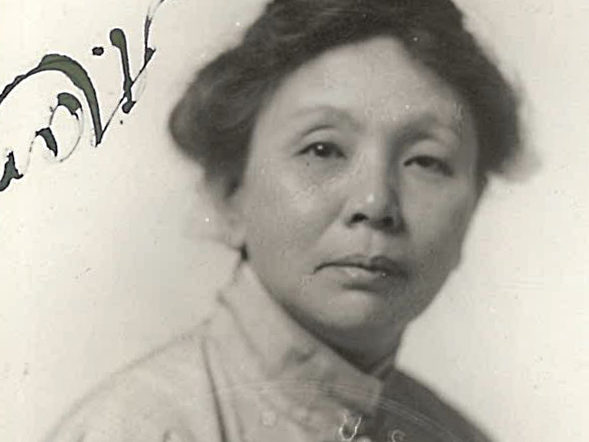
According to the Smithsonian, Benjamin Franklin, an inventor, gastronome, and “founding father” of the United States introduced tofu in the mid-18th century. Likely not having had any direct experience with the product himself, he only mentions it in a letter composed to a colleague. In the letter, he discusses his research of a Dominican friar’s account of Chinese cuisine with specific mention of “teu-fu” as an intriguing type of cheese.
One has to wonder why the huge population of Chinese immigrants might not be credited with this honor. The first wave began in 1815, and, surely, these folks would have brought knowledge of their own traditional foods. Unlike Franklin, they would have had a great familiarity with soy.
In any case, the efforts of a Chinese doctor can certainly be credited for an all-out campaign to introduce and popularize soy at the height of the first world war. The first Chinese woman to earn a medical degree in the US, Yamei Kin collaborated with the American government in its search for efficient and nutritious foodstuffs in a time of great scarcity.
Dr. Kin insisted that the US stood to greatly benefit from Chinese soy (and Chinese culture more broadly) and the many creative dishes it could render. She was also clear that the intense anti-Chinese sentiment of the era, coupled with imperialist stereotypes that characterized Asians as malnourished and weak, should be challenged. Indeed, she was quite aware that the diet of the Chinese nation had much to do with American nativism:
The chief reason why people can live so cheaply in China and yet produce for that nation a man [sic] power so tremendous that this country must pass an Exclusion act against them is that they eat beans instead of meat.
New York Times. 1917. “Woman Off to China as Government Agent to Study Soy Bean: Dr. Kin.” New York Times, June 10, p. 65.
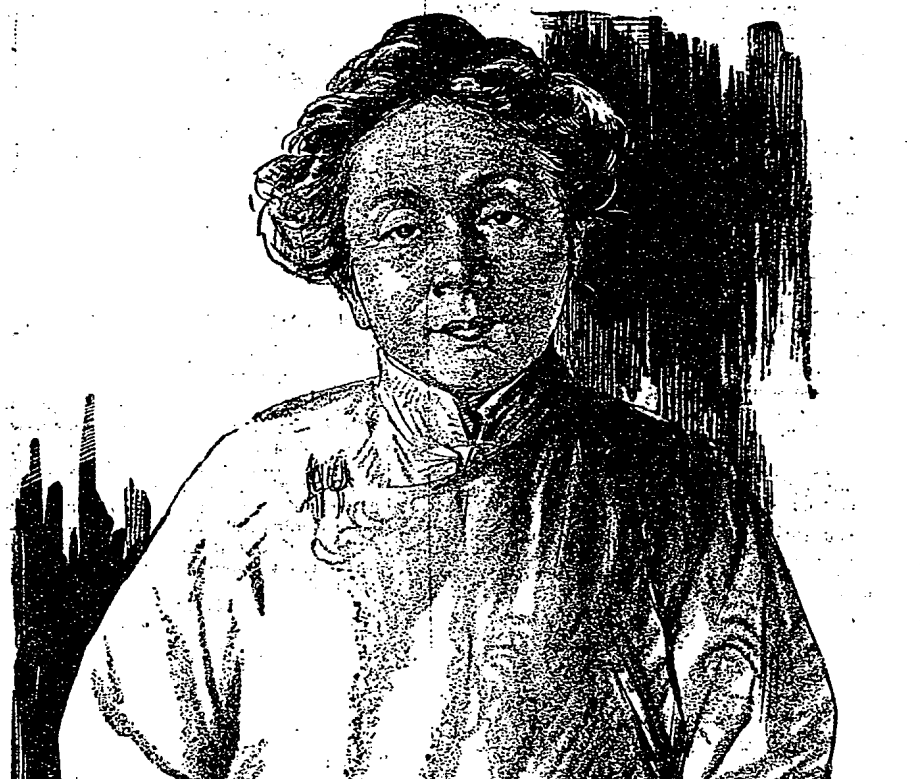
Although she was raised in Japan and spent considerable time in the US, she was an ardent advocate of her native China. More specifically, she busied herself aiding girls and women of the country, making regular return trips in service to feminism.
Kin herself was not vegan, but she was certainly critical of meat and dairy. The world, she explained,
cannot very well afford to wait to grow animals in order to obtain the necessary percentage of protein. Waiting for an animal to become big enough to eat is a long proposition. First you feed grain to a cow, and, finally, you get a return in protein from milk and meat. A terribly high percentage of the energy is long in transit from grain to cow to a human being. […]
Instead of taking the long and expensive method of feeding grain to an animal until the animal is ready to be killed and eaten, in China we take a shortcut by eating the soy bean, which is protein, meat, and milk in itself.
New York Times. 1917. “Woman Off to China as Government Agent to Study Soy Bean: Dr. Kin.” New York Times, June 10, p. 65.
She sympathized a bit with the animals themselves. In an interview with St. Louis Post-Dispatch Sunday Magazine, she explains:
The trouble with vegetarians was that they expected us to eat such awful things. I’m not a vegetarian, but I must admit that I find great satisfaction in being able to sit down to most of my meals without facing the fact that I am eating slices of what was once a palpitating little animal, filled with the joy of life. I shouldn’t be surprised if the soy bean will save the lives of many American animals.
Kin developed tofu provisions for the war effort and successfully taste-tested them with soldiers. Unfortunately, logistical difficulties in procuring and transporting soy prevented its largescale adoption.
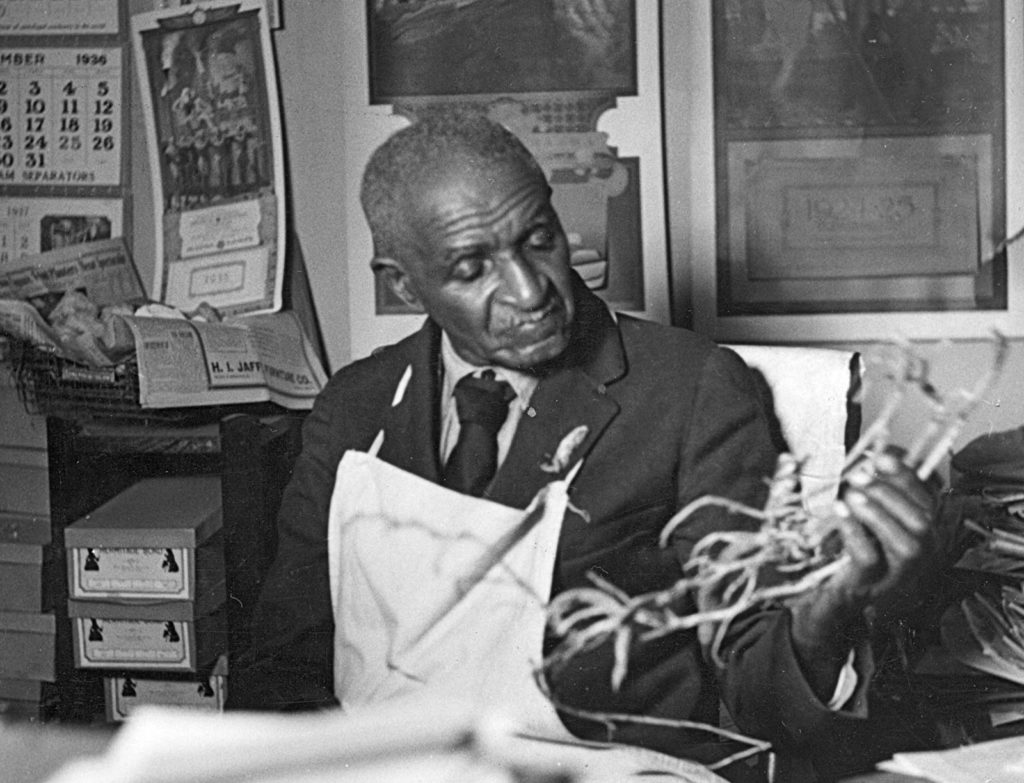
American experiments with soy as a potential savior of the nation’s nutrition would persist after the war. We also have George Washington Carver to thank for this. A scientist and food inventor who had been born into slavery, he is most often celebrated for popularizing the many ways to cook with peanuts. He did the very same with soybeans.
Tofu did not take off in American cuisine until the 1960s thanks to the hippie commune movement. Residents began making tofu (and soy milk) on-premises to feed the community. Some of these folks went on to start businesses as the commune movement came to an end and the back-to-the-land bohemians went back to their 9 to 5’s. The popularity of “natural foods” that persisted thereon catapulted soy into the American imagination, where it remains today.
It is a rocky love affair. Soy is increasingly vilified for its environmental impact, particularly when it is grown as a monoculture. However, the vast majority of soy that is produced today goes toward livestock feed, completely undermining the original vision of Kin and Carver. America’s hamburger culture, sadly, would come to prominence. The dream of a tofu nation populated by liberated animals and fortified humans would not fully materialize. Not yet, anyway.
Dr. Wrenn is Lecturer in Sociology at the University of Kent. She received her Ph.D. in Sociology with Colorado State University in 2016. She was awarded Exemplary Diversity Scholar, 2016 by the University of Michigan’s National Center for Institutional Diversity. She served as council member with the American Sociological Association’s Animals & Society section (2013-2016) and was elected Chair in 2018. She is the co-founder of the International Association of Vegan Sociologists. She serves as Book Review Editor to Society & Animals and is a member of the Research Advisory Council of The Vegan Society. She has contributed to the Human-Animal Studies Images and Cinema blogs for the Animals and Society Institute and has been published in several peer-reviewed academic journals including the Journal of Gender Studies, Environmental Values, Feminist Media Studies, Disability & Society, Food, Culture & Society, and Society & Animals. In July 2013, she founded the Vegan Feminist Network, an academic-activist project engaging intersectional social justice praxis.
She is the author of A Rational Approach to Animal Rights: Extensions in Abolitionist Theory (Palgrave MacMillan 2016), Piecemeal Protest: Animal Rights in the Age of Nonprofits (University of Michigan Press 2019), and Animals in Irish Society: Interspecies Oppression and Vegan Liberation in Britain’s First Colony (State University of New York Press 2021).
Receive research updates straight to your inbox by subscribing to my newsletter.
How to Celebrate the New Year the Vegan Feminist Way

As each new year unfolds on December 31st and January 1st bringing millions to contemplate new beginnings, the same period marks the annual massacre of marginalized nonhumans. Free-living animals, domesticated animals (such as dogs and horses), and even human children are traumatized, harmed, or killed by fireworks. In the United States, where fireworks are also discharged on July 4th, the number of accidents can exceed 10,000 each year.
Most of these victims are children. The number of nonhuman victims is, of course, unknowable, but presumably many times that. Following the 2021 celebrations in Rome, the bodies of hundreds of roosting starlings were found dead or dying on the streets as the sun rose on January 1st.
The fascination with fire, noise, gunpowder, and other explosives marks the practice as distinctly masculinized. The entitlement to the sky and landscape for the pleasure of a relatively small group of people is also patriarchal.
Fireworks may be clearly macho, but other forms of aerial celebrations demark anthropocentrism in our relationship to Nonhuman Animals and the environment. Balloon and lantern releases, while much more peaceful, cause horrific silent suffering for the animals who ingest the remains when they fall to earth or sea. Glitter and plastic confetti, likewise, collect in ecosystems (and digestive systems), slowly suffocating land and animal bodies. Closer to the ground, bonfires can set unsuspecting shelterers ablaze, such as hedgehogs and owls. They also run the risk of starting wildfires, a “natural disaster” that claims millions of lives every year.

Must we destroy and litter in order to celebrate? New Year’s Day is part of the larger yuletide season in which the northern hemisphere enters a period of rest, death, and decay. As the spring returns, new birth and growth begin with another rotation around the sun. Perhaps this explains humanity’s penchant for grievousness at times of celebration. Renewal requires destruction. Yet, while there may be an element of necessity to this process in the natural world, in the cultural world, we can certainly sustain one another through the process in communal, less violent means.
One of my favorite ways to celebrate is with vegan food! On the desirability of this practice, most of us, human or not, can agree. I often leave bits out for the animals in my community to share. We can make our celebrations opportunities for inclusion and togetherness, rather than another opportunity to terrorize other animals.
Neopagans and modern witches often leave offerings of food for the “fae” as part of their ritual practice. Faeries are, of course, fictional representatives of the seemingly magical unseen workings of the natural world outside our door. When I leave squash or berries out in the evening, in the morning they are gone. Was it the fae? A fox? A hedgehog? It’s fun to imagine.

Although paganism often practiced celebrations that were violent to other animals (including animal sacrifices, feasts of animal flesh, ceremonial “hunts,” and wildlife-threatening bonfires),1 the pagan way also encourages communion. As Christianity colonized the West, the animistic pagan lineage, a threat to the newly establishing order, was through to survive in women. Witches were believed to be closely bound to other animals, as both represented the wild, potentially dangerous, natural world. Women’s relationship with other animals was thought highly suspicious, in fact. The stereotype of the “crazy old cat lady” is a vestige of this distrust of independent women who treat other animals as persons and reject traditional, patriarchal institutions like marriage and child production.
The witch’s new year begins at Samhain (literally “November” in Gaelic). Samhain Oiche2 (“Halloween” or “Samhain’s night”) is the traditional day of celebration. New Year’s Day came to be celebrated on January 1st with the spread of Roman culture across the West. It is a Christian and colonial imposition. How fitting that the witch’s new year, November 1st, also falls on World Vegan Day.
Caring for other animals and building relationships with them, both inside the home and outside, is an act of vegan feminist resistance. By celebrating the new year with attentiveness to others in our community, we can make the yuletide truly a season of rest and rejuvenation. Forgo the fireworks and feed your familiars!
1. Stonehenge, a neolithic site designed to celebrate the winter solstice and new year is now known to be a major site of animal sacrifice and feasting given the vast number of butchered bones left behind.
2. Gaelic is sure fun to pronounce! Samhain Oiche should be read as “sah-win ee-heh”.
 Dr. Wrenn is Lecturer of Sociology. She received her Ph.D. in Sociology with Colorado State University in 2016. She received her M.S. in Sociology in 2008 and her B.A. in Political Science in 2005, both from Virginia Tech. She was awarded Exemplary Diversity Scholar, 2016 by the University of Michigan’s National Center for Institutional Diversity. She served as council member with the American Sociological Association’s Animals & Society section (2013-2016) and was elected Chair in 2018. She serves as Book Review Editor to Society & Animals and is a member of the Research Advisory Council of The Vegan Society. She has contributed to the Human-Animal Studies Images and Cinema blogs for the Animals and Society Institute and has been published in several peer-reviewed academic journals including the Journal of Gender Studies, Environmental Values, Feminist Media Studies, Disability & Society, Food, Culture & Society, and Society & Animals. In July 2013, she founded the Vegan Feminist Network, an academic-activist project engaging intersectional social justice praxis. She is the author of A Rational Approach to Animal Rights: Extensions in Abolitionist Theory (Palgrave MacMillan 2016).
Dr. Wrenn is Lecturer of Sociology. She received her Ph.D. in Sociology with Colorado State University in 2016. She received her M.S. in Sociology in 2008 and her B.A. in Political Science in 2005, both from Virginia Tech. She was awarded Exemplary Diversity Scholar, 2016 by the University of Michigan’s National Center for Institutional Diversity. She served as council member with the American Sociological Association’s Animals & Society section (2013-2016) and was elected Chair in 2018. She serves as Book Review Editor to Society & Animals and is a member of the Research Advisory Council of The Vegan Society. She has contributed to the Human-Animal Studies Images and Cinema blogs for the Animals and Society Institute and has been published in several peer-reviewed academic journals including the Journal of Gender Studies, Environmental Values, Feminist Media Studies, Disability & Society, Food, Culture & Society, and Society & Animals. In July 2013, she founded the Vegan Feminist Network, an academic-activist project engaging intersectional social justice praxis. She is the author of A Rational Approach to Animal Rights: Extensions in Abolitionist Theory (Palgrave MacMillan 2016).
Receive research updates straight to your inbox by subscribing to my newsletter.
The Racial Injustice We Eat
George Floyd.
You know his name. And you should.
But do you recognize these names?
Jose Andrade-Garcia. Jeronimo Anguiano. Tin Aye. Eduardo Conchas de la Cruz. Husen Jagir. Juan Manuel Juarez Alonzo. Sha Myan Kaw Bu. Axel Kabeya. Way Ler. Guadalupe Olivera. Tibursio Rivera López. Gonzalo Peralta. Augustine Rodriguez. Saul Sanchez.
These people, like George Floyd, suffered the lethal costs of systemic racism. And while police officers were responsible for the death of George Floyd, we, the general members of the public, are responsible for the deaths of these others. After all, they died so that we can enjoy hamburgers. More specifically: these people lost their lives by working in meatpacking facilities, which are notorious for their dangerous and dirty working conditions. Tragically, they disproportionately exploit racial and ethnic minorities.
The pandemic has only exacerbated the risks for meatpacking workers. At least 370 meatpacking facilities have had confirmed cases of Covid-19, which makes them one of three major coronavirus hotspots (in addition to prisons and nursing homes). At least 35,597 meatpacking workers have tested positive for Covid-19, and at least 148 of them have died. But not all races are affected equally: while most of the managers are white, 70% of the production line workers are Black, Latino, and Asian; as a result, 87% of those infected with the coronavirus are ethnic and racial minorities. This, too, is a civil rights issue.
Meatpacking facilities are commonly referred to as “coronavirus incubators” because production floors are organized in such a way that makes social distancing impossible. Line workers stand shoulder-to-shoulder skinning, pulling, cutting, deboning, packing, and cleaning animal carcasses for hours at a time. Production lines are overcrowded due to their pace: the faster the lines, the greater number of employees needed. And the speed of the work makes it impossible for employees to worry about whether their masks are properly positioned. Despite knowing this, meat plants have neither slowed processing speeds, nor spaced workers six or more feet apart, as was recommended by the CDC. Moreover, the USDA’s Food Safety and Inspection Service granted at least 15 poultry processors waivers to increase poultry processing lines.
Understandably, then, line workers are terrified to report to work, but they continue to risk their lives; the alternative is unemployment. Moreover, a number of meatpacking employers offer workers $500 “responsibility bonuses” for working through the pandemic, incentivizing employees to work while ill. Low-income meatpacking employees, the majority of whom are racial and ethnic minorities, have been standing in coronavirus incubators for hours each day, all so that we can enjoy hamburgers.
While you might think that the answer is just to offer meatpacking employees paid sick leave and better protection from the coronavirus, it isn’t so simple. Meatpacking employees have long been subjected to dangerous working environments, frequently suffering physical injuries, including repetitive-motion injuries, such as rotator cuff injuries, tendonitis and carpal tunnel syndrome, and back and shoulder problems. Workers often die from knife accidents, chemical exposure, machine injuries, and deadly encounters with large animals who thrash about on production lines when stunned incorrectly.
Working in production lines is inherently dangerous. Moreover, because slaughterhouse work is inherently violent, and workers kill hundreds of animals each hour and thousands per week, the workers suffer severe psychological trauma. And because the physical and psychological risks disproportionately impact ethnic and racial minorities, this is a racial injustice. That’s why a recently filed civil rights complaint against Tyson Foods and JBS states that meatpacking facilities are responsible for a pattern of racial discrimination. So, banning higher line speeds, adhering to the CDC’s social distancing recommendations, and giving workers paid sick leave won’t eliminate the injustices meatpacking employees face.As the late philosopher Tom Regan puts it, “you don’t change unjust institutions by tidying them up.”
There’s a very different story to be told when it comes to the production of plant-based meats, which are produced in high-tech facilities that allow for social distancing. For instance, at the Impossible Foods factory, shifts are staggered to limit the number of employees in the plant at one time, workers are provided with masks and personal protective equipment, and surfaces are constantly sanitized.
Given the wide assortment of ethically produced plant-based alternatives, we can go without meat. And if we oppose racial injustice, we should. You can do something about our unjust systems of food production. You can stop supporting an industry that profits from systematically exploiting the vulnerable, that readily devalues the lives of black and brown people. You can stop eating food that’s tainted with racial injustice. Will you?
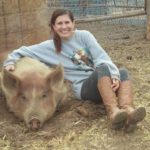 Cheryl Abbate is an assistant professor of philosophy at the University of Nevada, Las Vegas and the co-president of the Society for the Study of Animal Ethics. She specializes in ethics (especially animal ethics), social and political philosophy, and epistemology (especially the intersection of epistemology and ethics). Recent publications include: “A Defense of Free-roaming Cats from a Hedonist Account of Feline Well-being” (Acta Analytica), “Veganism, (Almost) Harm-free Animal Flesh, and Nonmaleficence: Navigating Dietary Ethics in an Unjust World” (Routledge Handbook of Animal Ethics), and “Valuing Animals as They Are: Whether they Feel It or Not” (European Journal of Philosophy).
Cheryl Abbate is an assistant professor of philosophy at the University of Nevada, Las Vegas and the co-president of the Society for the Study of Animal Ethics. She specializes in ethics (especially animal ethics), social and political philosophy, and epistemology (especially the intersection of epistemology and ethics). Recent publications include: “A Defense of Free-roaming Cats from a Hedonist Account of Feline Well-being” (Acta Analytica), “Veganism, (Almost) Harm-free Animal Flesh, and Nonmaleficence: Navigating Dietary Ethics in an Unjust World” (Routledge Handbook of Animal Ethics), and “Valuing Animals as They Are: Whether they Feel It or Not” (European Journal of Philosophy).

